Anubias barteri v. angustifolia
Scientific name: Anubias barteri v. angustifolia
Family: Araceae
Maximum size reached under cultivation: 10 - 15 cm (3.94 - 5.91 inch)
014
Recommended pH range: 5.5 - 8
Recommended water hardness: 0 - 18°dGH (0 - 321.43ppm)
0°C 32°F30°C 86°F
Recommended temperature range: 20 - 30 °C (68 - 86°F)
Preferred propagation method: Rhizome
Native to: Africa
Growth rate: Slow
Recommended substrate: Gravel
Lighting requirements: Subdued
Ideal placement in tank: Foreground
🌿 Family
Araceae
🏷️ Common Names
- Anubias barteri var. angustifolia
- Anubias lanceolata
🌍 Origin
Anubias barteri var. angustifolia is native to West Africa, particularly in regions like Guinea. It grows along shaded riverbanks and in slow-moving or stagnant freshwater. This species naturally occurs in partially submerged or emersed environments, which makes it highly adaptable to aquarium life.
🌱 Propagation
This plant reproduces via rhizome division. To propagate, use a sharp blade or scissors to cut the rhizome into sections, ensuring each part has at least 3–4 leaves and some roots. These divisions can be attached to rocks, driftwood, or decorations using plant-safe thread or glue. Avoid burying the rhizome in the substrate to prevent rot.
⚙️ Difficulty
Very easy. This is a hardy, low-maintenance aquatic plant that thrives in a wide range of conditions. It grows slowly, requires little trimming, and is ideal for both beginners and experienced hobbyists. Its tolerance of low light makes it suitable for low-tech aquariums or shaded zones.
📝 Short Description
Anubias barteri var. angustifolia is prized for its long, slender, dark green leaves that arch gently and create a refined, elegant look. Reaching a height of 10–15 cm (4–6 inches), it is perfect for the foreground or midground of aquascapes. It thrives when attached to hard surfaces and offers excellent contrast in planted layouts, especially when paired with broad-leaved or fast-growing background plants.
Its resilience to nibbling and shade tolerance make it ideal for tanks with goldfish, African cichlids, or other species that might otherwise disturb more delicate plants.
🧪 Maintenance and Care
This variety tolerates a pH range of 5.5 to 8.0 and water hardness from soft to moderately hard. Ideal temperatures are between 20–30°C (68–86°F). While fertilization is not essential, occasional liquid fertilizer and CO2 supplementation can enhance coloration and promote healthy growth. Minimal trimming is required due to its slow growth rate.
🎨 Submersion and Aquascaping Use
Anubias barteri var. angustifolia is fully compatible with both submerged and emersed setups, making it suitable for aquariums, paludariums, and ripariums. Its narrow leaves add delicate contrast and flow to layouts. Position it in partially shaded areas for optimal appearance and algae control. It performs best when attached to natural hardscape in biotope tanks, community aquariums, or nature-style layouts.
❓ Frequently Asked Questions (FAQ)
- Can it grow fully submerged?
✅ Yes, it grows well submerged and emersed. - Is CO₂ required?
💨 Not required, but low-level supplementation may improve coloration and density. - How fast does it grow?
🐢 Slowly. Like other Anubias, it produces only a few new leaves per month. - Will herbivorous fish eat it?
🐟 Rarely. Its thick, leathery leaves are resistant to nibbling. - Where should I place it in the aquarium?
📍 Attach it to rocks or driftwood in the foreground or midground, preferably in shaded or low-light areas.

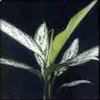 Aglaonema commutatum “Silver Queen”
Aglaonema commutatum “Silver Queen”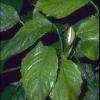 Aglaonema simplex
Aglaonema simplex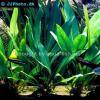 Anubias afzelii
Anubias afzelii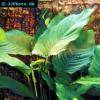 Anubias barteri
Anubias barteri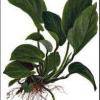 Anubias barteri “Caladiifolia” ‘1705’
Anubias barteri “Caladiifolia” ‘1705’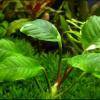 Anubias barteri “Coffeefolia”
Anubias barteri “Coffeefolia”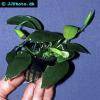 Anubias barteri “Nana”
Anubias barteri “Nana”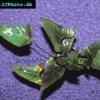 Anubias gracilis
Anubias gracilis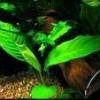 Anubias heterophylla
Anubias heterophylla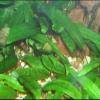 Cryptocoryne affinis
Cryptocoryne affinis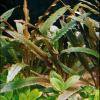 Cryptocoryne albida
Cryptocoryne albida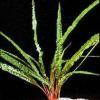 Cryptocoryne balansae
Cryptocoryne balansae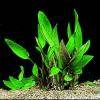 Cryptocoryne becketti
Cryptocoryne becketti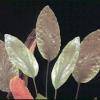 Cryptocoryne blassi
Cryptocoryne blassi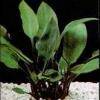 Cryptocoryne ciliata
Cryptocoryne ciliata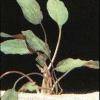 Cryptocoryne cordata
Cryptocoryne cordata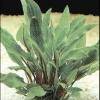 Cryptocoryne lutea
Cryptocoryne lutea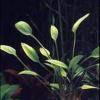 Cryptocoryne nevillii
Cryptocoryne nevillii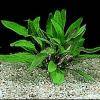 Cryptocoryne petchii
Cryptocoryne petchii Cryptocoryne pontederiifolia
Cryptocoryne pontederiifolia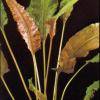 Cryptocoryne wendtii
Cryptocoryne wendtii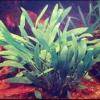 Cryptocoryne willisii
Cryptocoryne willisii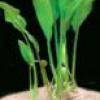 Lagenandra ovata
Lagenandra ovata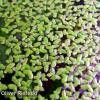 Lemna minor
Lemna minor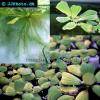 Pistia stratiotes
Pistia stratiotes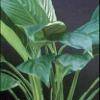 Spathiphyllum petite
Spathiphyllum petite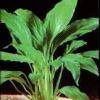 Spathiphyllum wallisii
Spathiphyllum wallisii